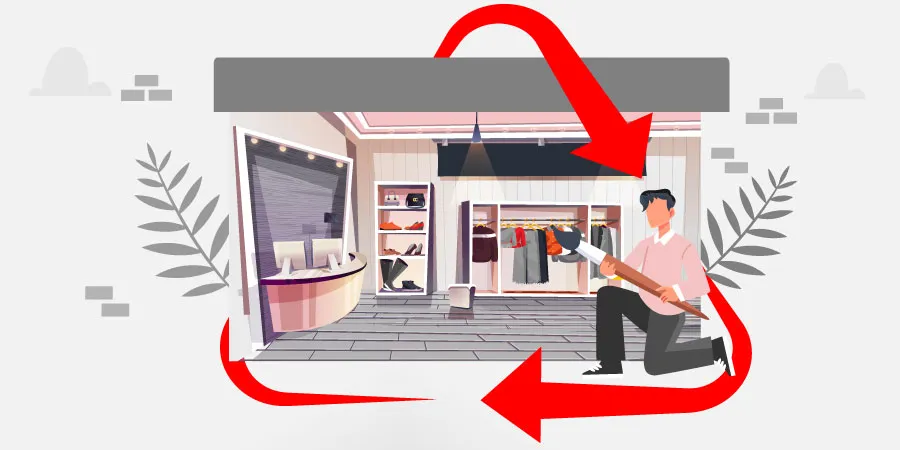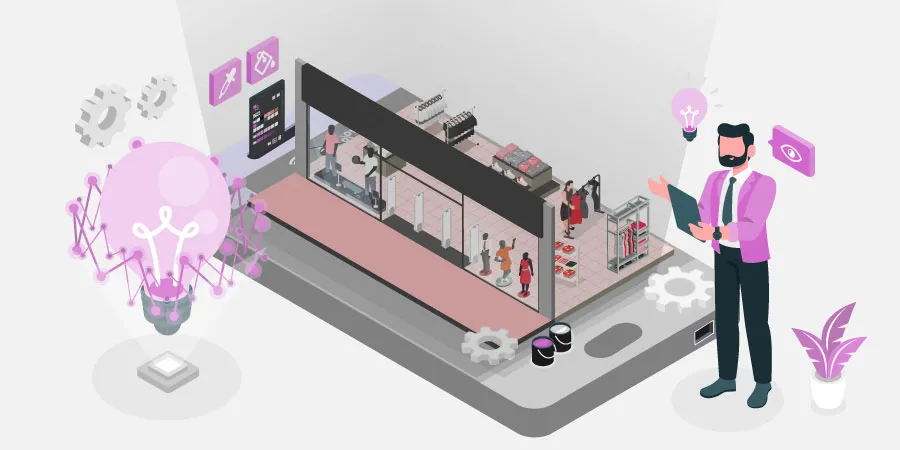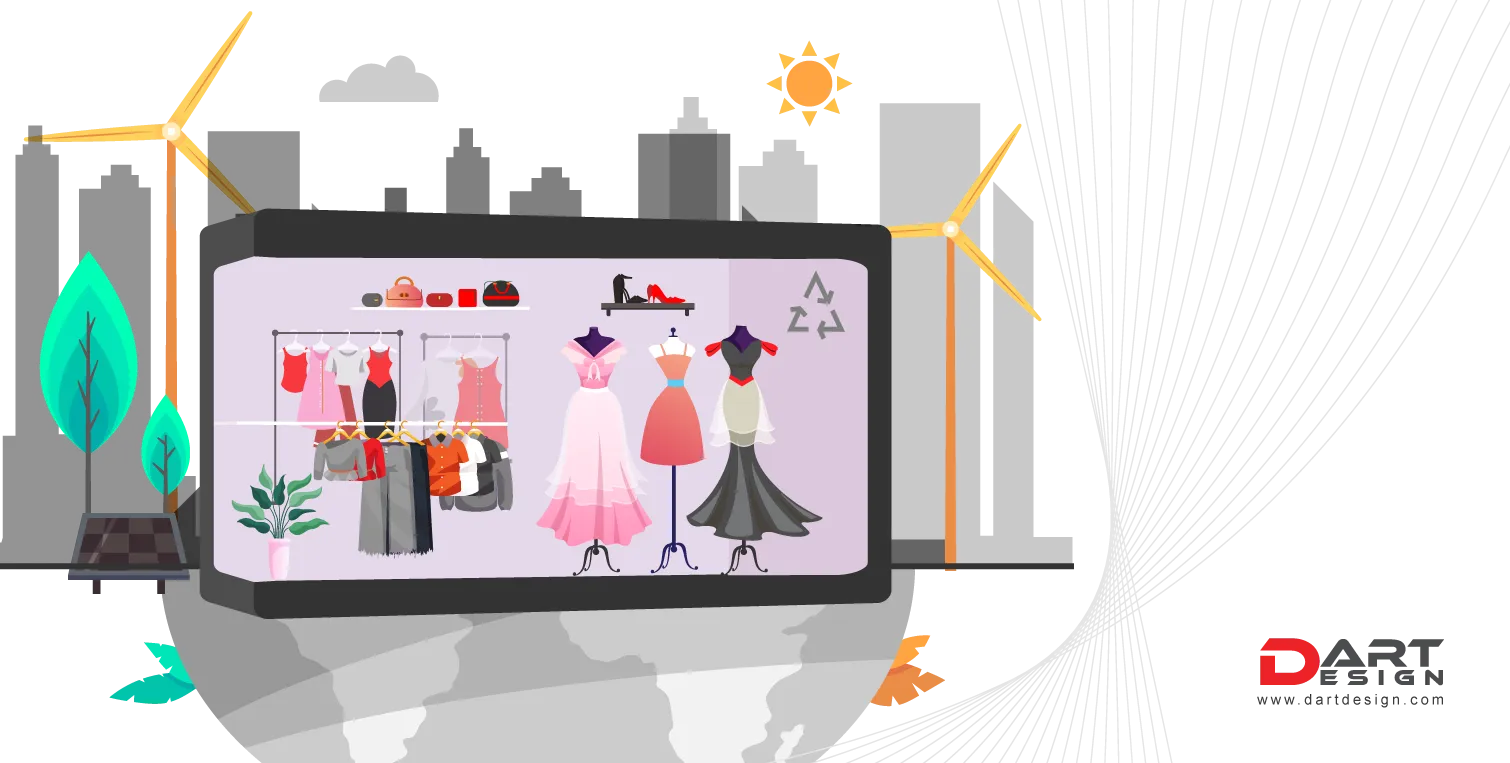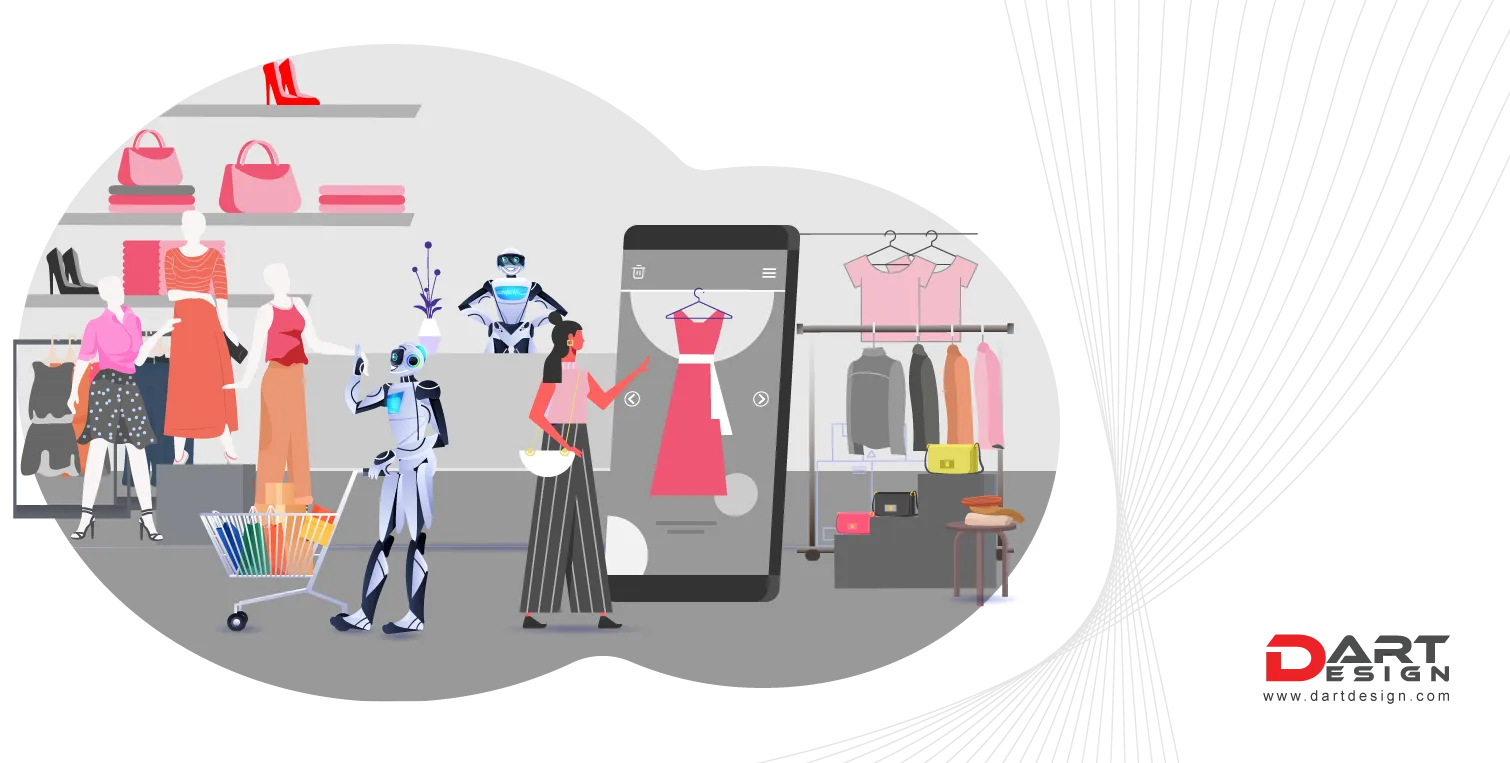Table of Contents
In the present era where changing consumer behaviors continues to define the dynamics in global retail, the significance of sustainable environmental store design proves to be extremely crucial for brands and retailers in shaping strong positive perceptions and beliefs and reflecting uncompromised commitment to environmental care. As the newly evolving conscious consumers becomes increasingly aware of their purchasing habits and patterns and the impact on society and the environment at large, the idea of turning places into habitats by establishing sustainable models tends to be a brilliant move to future-proof business and stay ahead of the curve while reflecting unwavering stance on environmental concerns in line with consumer sentiments and expectations.
Sustainable environmental interior design represents a crucial facet of contemporary retail store design philosophy, driven by the escalating awareness of new consumers on pressing environmental issues and aligning sustainability efforts to customer experience to complement brand values while steering towards a sustainable future.
As societies strive for a harmonious coexistence with the planet, interior design specialists through design-thinking innovation could play an instrumental role in crafting spaces that not only cater to human needs but also respect the environment.
Having emerged as a concept that weaves ecological responsibility, aesthetic ingenuity, and social consciousness, sustainable environmental design, within the realm of physical retail, is yet being explored to its full potential to transform transactional retailing into care-oriented retailing that goes beyond monetary values and the mere exchange of commodities. Being practiced quite aggressively, the new approach to interior design is nothing short of a journey towards a sustainable tomorrow—one where every structure, every space, becomes a testament to our commitment to building a better future for the coming generations.
Sustainable environmental design practice, precisely referring to the new-age retailing, at its core, seeks to build close-to-nature places that improves brand projection and positioning. The integration of sustainable practices in design involves a comprehensive approach that encompasses energy efficiency, resource conservation, waste reduction, and the use of eco-friendly materials. One of the fundamental principles guiding this approach is the concept of "cradle-to-cradle" design, which envisions products and buildings as materials that can be perpetually recycled or repurposed.
The benefits of sustainable environmental design extends beyond ecological considerations to encompass social and economic dimensions. A well-designed sustainable environment contributes to the health and well-being of inhabitants, fostering a sense of community and connection with nature.
Sustainable environmental design, in a broader context, remains to be a holistic approach that addresses the interplay between human activities, the built environment, and the natural world. Its benefits are far-reaching, encompassing preservation, conservation, social well-being, and economic efficiency.
Critical Challenges

While the principles of sustainable design are clear, the seamless integration into the practice of interior design is not without challenges. Cost implications often pose a significant hurdle, as sustainable materials and technologies may require intensive investment. Enlightening clients and stakeholders about the long-term benefits of sustainable design is crucial in overcoming this obstacle.
The availability and sourcing of sustainable materials can also be challenging, especially when seeking unique or specialized items. Designers may need to forge relationships with eco-conscious suppliers or explore local resources to ensure a diverse palette of sustainable elements.
Balancing aesthetics with sustainability is another challenge. Historically, there has been a perception that sustainable design compromises on style and luxury. Overcoming this misconception requires showcasing innovative, aesthetically pleasing designs that align with sustainability principles.
Critics of sustainable environmental design often cite concerns about its economic feasibility. However, closer examination reveals that the long-term benefits far outweigh the initial costs. For instance, energy-efficient buildings result in lower operational costs over time, and the growing demand for sustainable design is driving innovations that make eco-friendly materials more accessible. It is an investment in the future that pays dividends in environmental, social, and economic terms.
Regulatory frameworks and incentives facilitates countering such challenges effectively as governments and federal bodies can promote the practice of sustainable store design through building codes and parameters that mandates compliance to specific standards and norms. Financial incentives, such as tax credits or grants for sustainable projects, can also stimulate adoption. Collaboration between the public and private sectors is crucial to creating an environment where sustainable design is not only encouraged but becomes the norm.
Core Principles

As sustainable environmental design embodies the conscientious creation of spaces that minimize carbon footprint, it goes beyond mere aesthetics, intertwining functionality with responsibility towards nature. Some of the key aspects to the concept includes energy efficiency, the use of eco-friendly materials, water conservation, and the integration of renewable energy sources. By fusing these elements seamlessly, designers craft spaces that coexist harmoniously with the environment, promoting longevity and resilience.
At its core, sustainable environmental store interior design is guided by a set of principles aimed at minimizing the negative environmental impact while optimizing the health and well-being of occupants. These principles encompass resource efficiency, material selection, energy conservation, waste reduction, and ambiance.
Resource efficiency involves the judicious use of materials and resources to minimize waste and promote longevity. From recycled materials to energy-efficient appliances, the choices made during the design process significantly impact the outlook of the place. Material selection extends beyond aesthetics, focusing on the life cycle of materials and their environmental footprint. Embracing renewable and recycled materials becomes imperative in curbing the ecological toll of interior design. For instance, bamboo, reclaimed wood, recycled steel, and other eco-friendly alternatives are gaining prominence, offering not only aesthetic appeal but also a tangible commitment to environmental care.
One of the pillars of sustainable environmental design is the calculative use of energy. Structures with no concentration on sustainability are responsible for significant energy consumption and greenhouse gas emissions. Sustainable design aims to reverse this trend by implementing energy-efficient technologies and practices. From solar panels and wind turbines to smart lighting systems and well-insulated structures, all elements must be meticulously considered to reduce energy consumption and foster sustainability across quarters.
While energy conservation is paramount in sustainable design, implementing energy-efficient heating, ventilation, and air conditioning systems also help reduces overall carbon footprint. Passive design strategies, such as maximizing natural light and ventilation, further enhance energy efficiency. Additionally, waste reduction strategies, like recycling and upcycling, contribute to a circular economy where materials are reused instead of discarded.
As indoor air quality is a critical consideration in sustainable environmental interior design, opting for low-VOC (volatile organic compound) paints, finishes, and furnishings ensures a healthier indoor environment, safeguarding from respiratory issues and other health concerns associated with poor air quality.
With respect to the preservation of precious resource, making water conservation a priority in sustainable environmental design is one of the major aspects in creating thriving yet futuristic places. From rainwater harvesting systems to low-flow fixtures, designers could employ innovative strategies to minimize the use of water. The integration of permeable surfaces and green roofs further facilitates water absorption, reducing runoff and supporting local ecosystems.
Innovative Concepts

The sustainable environmental interior design space is witnessing a surge in innovations that address challenges and push the boundaries of what is possible. Advancements in smart home technology, for instance, allow for more precise control over energy consumption. Smart thermostats, lighting systems, and automated shading contribute to a more energy-efficient and sustainable interior environment.
Being explored as a game-changing solution, Biophilic Design, as yet another revolutionary approach helps bridge nature with architecture. In the quest for excellence in sustainable environmental design, designers in the present times are increasingly embracing this idea as it seeks to reconnect occupants with nature. Incorporating elements such as green walls, indoor plants, and natural lighting, biophilic design not only enhances the aesthetic appeal of spaces but also contributes to improved well-being and productivity.
Material science pertaining to the use of material, is also a major aspect in advancing sustainability. The development of eco-friendly materials, such as bioplastics, reclaimed wood, and recycled metal opens new possibilities for interior designers. Innovations in sustainable fabrics and textiles further contribute to the industry's eco-conscious evolution.
Circular design practices, emphasizing the reuse and recycling of materials, are gaining traction as designers are increasingly incorporating reclaimed and repurposed items into their creations, reducing the demand for new resources and minimizing waste.
Moving ever further on embracing the right ways to source material, community impact to fostering social sustainability requires procurement of local materials and engaging with the community in the design process. This approach ensures that the benefits of sustainable design reach beyond the confines of spaces, creating a positive ripple effect across communities as well.
Transformative Potential

As sustainable environmental interior design gains momentum, its transformative potential becomes increasingly evident. Beyond the immediate benefits of resource conservation and energy efficiency, this approach has broader implications for the built environment and the way people interact with it.
One of the major transformative aspects is the potential to inspire a shift in consumer behavior. By reflecting the elegance and functionality of sustainable design, brands can influence individuals to make environmentally conscious choices and lead better lifestyles.
Moreover, sustainable design fosters a connection between occupants and their surroundings. Spaces that prioritize natural light, greenery, and eco-friendly materials create environments with values that resonate with consumers. This connection is believed to enhance well-being, productivity, and overall satisfaction in interior spaces.
Sustainable environmental interior design is not merely a trend, but a paradigm shift in the way we conceive and craft interior spaces. The principles of sustainability, coupled with innovative solutions and a commitment to transformative change, position this design philosophy as a catalyst for more harmonious relationship-building.
As designers continue to explore and implement sustainable practices, the future of interior design holds the promise of spaces that seamlessly blend aesthetics, functionality, and environmental responsibility. Through ongoing research, collaboration, and commitment, the concept helps shape a more sustainable and resilient environments that helps build greater loyalty, faith, and trust of the new consumers.




